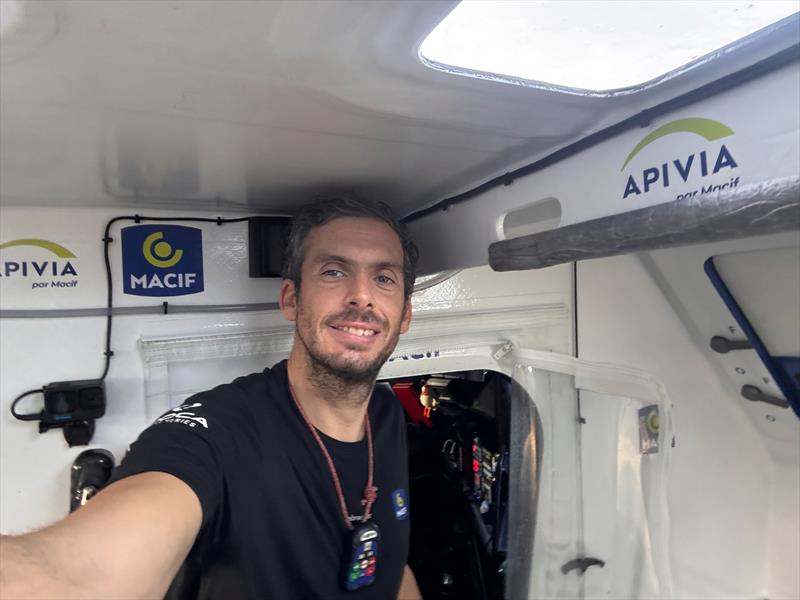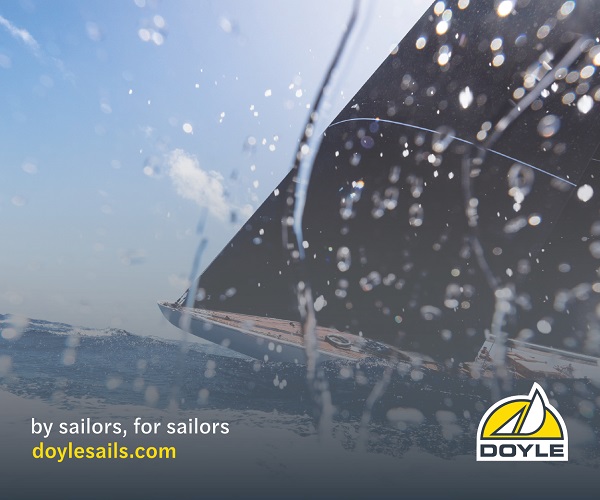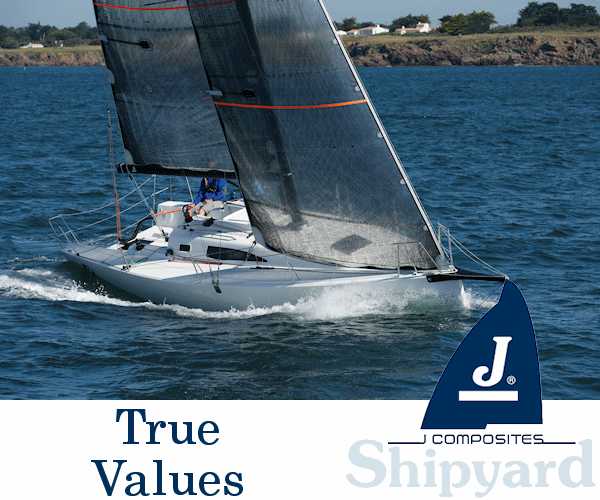
Vendée Globe Race Update for Tuesday: Living on the Edge
by Vendée Globe media, 26 Nov 09:38 PST
26 November 2024

Charlie Dalin aboard MACIF Santé Prévoyance – Vendée Globe 2024 © Charlie Dalin


Following three days of an unyielding pace, consuming miles at record-breaking speeds – 520, 530, and 550 miles seemingly in one go, the leading racers of the Vendée Globe fleet remain ahead of the depression while their pursuers are falling behind, as anticipated. Consequently, expectations are that the leaders will continue to extend their lead. Behind them, cracks widen into gaps and then chasms.
The distance is noticeably increasing after the top nine, and this difference will become even clearer as they approach the Cape of Good Hope late on Friday. Those who lag behind will need to wait for the next low-pressure system, while race leader Charlie Dalin (MACIF Santé Prévoyance) and his closest competitors will keep racing in consistent winds before gybing south to navigate the Antarctic Exclusion Zone.
Race organizers have decided to shift the AEZ southward by almost 100 miles, at least to the Crozet archipelago, thus allowing them to chart a shorter course while also taking advantage of the low-pressure systems that are situated further south.
Dalin and the leading pack have been averaging 500 miles every 24 hours, living life at a frenetic rhythm.
“It’s mentally challenging and simultaneously drives you to maintain the pace,” commented Sébastien Simon (Groupe Dubreuil), currently in fourth place, trailing Dalin by 90 miles. “The depression we are on seems to be diminishing. Some will struggle to stay behind it, while we will find ourselves fully immersed in it!” Simon elaborated, anticipating another tough and swift night on the edge.
“It’s mentally challenging and simultaneously drives you to maintain the pace,” Sébastien Simon, Groupe Dubreuil
The AEZ has been shifted southward.
“The wind will be strong but also very gusty. We will have to navigate rapidly in a sea that will be building, and it’ll be quite intense,” Simon remarked, hoping to capitalize on the winds created by the tightly packed low-pressure system for as long as he can before it overtakes him and he must gybe south to avoid being caught by the expanding Saint Helena anticyclone. Their route is now more open as Race Management has decided to contract the Antarctic Exclusion Zone (AEZ), a conceptual barrier around the Antarctic continent (composed of 72 GPS points each separated by 5 degrees) intended for the safety of skippers.
A dual benefit.
What prompted this decision? “At the start and during the race’s initial days, CLS, which provides Vendée Globe with its expertise in processing radar and altimetric satellite data and modeling ocean currents to detect and forecast iceberg drift, reported echoes near the zone. Since then, new satellite imagery has confirmed these echoes to be fishing vessels, while the icebergs and growlers are located considerably further away. We’ve decided to reduce the AEZ by nearly 100 miles to the Crozet archipelago,” explained Fabien Delahaye, who, along with other members of the Race Direction team, was able to make timely decisions to modify this zone after the Kerguelen Islands.
“This adjustment will facilitate a strong start into the Indian Ocean while also slightly shortening the theoretical course,” Sébastien Simon echoed the sentiments of most competitors—though many are currently focused on other challenges.
For those who have fallen behind, conditions suddenly become turbulent with unsettled and shifting winds and seas:
“Unlike the boats ahead that are in front of the depression, we are just behind it. Thus, we are enduring some of its turbulence, but we are making headway,” remarked Louis Burton (Bureau Vallée) who is disappointed not to be racing with the leaders.
Pip Hare, in 16th place on Medallia, encountered difficult conditions last night, abruptly losing wind and becoming ensnared under a cloud. Her somewhat erratic course over several hours raised concerns, though she explained, “I had a rather disastrous night. We’re sailing close to a massive front just south of us. Early evening, the wind completely died, only to return from 180 degrees. The front bulged up, and I sailed under a cloud for four and a half hours. Every time I reached the cloud’s edge, I thought, ‘Yes, I’m going to break free,’ but the wind would shift, and by the time I adjusted the sails, I was back beneath it. My arms are aching, and I haven’t slept at all. I’m almost afraid to sleep. I feel stupid; I’m being really hard on myself. Yet, I know I cannot linger here. I need to move on; this is a long race.”
Later, she added, “I have a winch that I need to rebuild during daylight hours while the boat is moving at 22.5 knots, so I’m prioritizing that. The nature of this race is that even a small problem can escalate quickly, so I must take the time to fix any technical issues before they worsen. I can only imagine what the rest of this race will be like, especially passing the Cape of Good Hope and heading into the Southern Ocean. But for now, I need to get back to the toolbox. I can see Damien Seguin just two miles ahead of me, so not only am I trying to fix this winch, but I’m also trying to keep a bit of pressure on him!”
Find out more…


